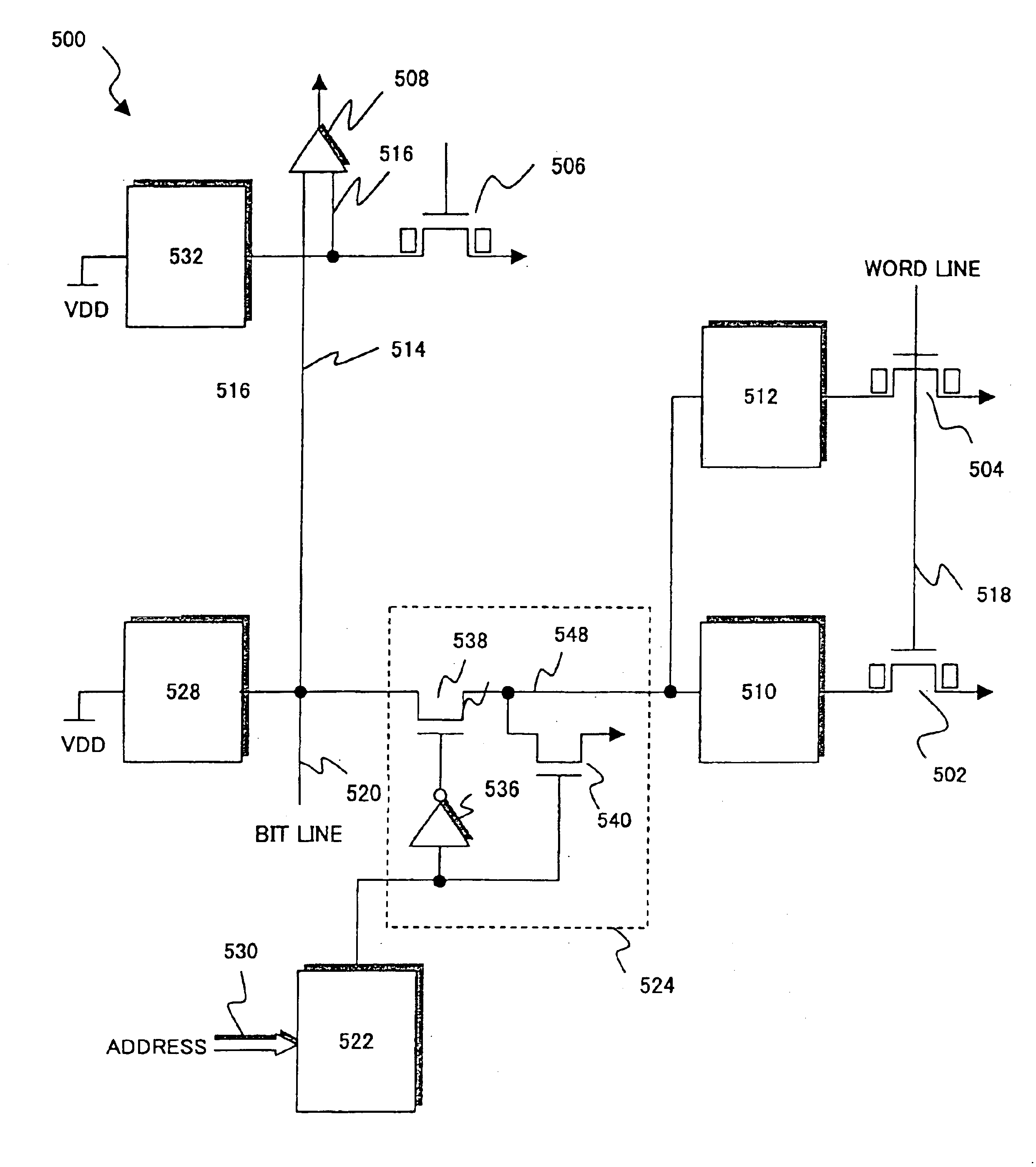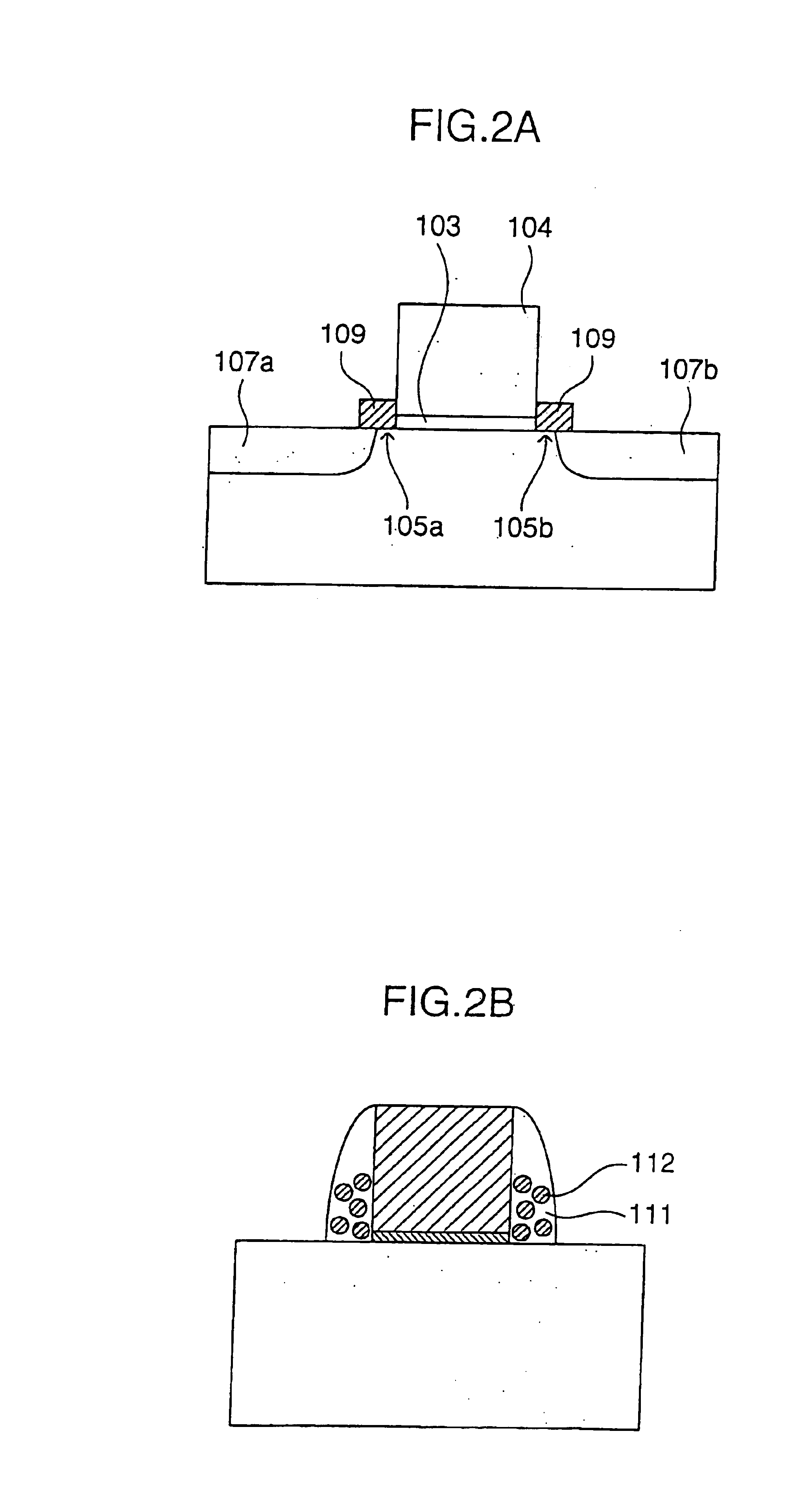Semiconductor memory device
a memory device and semiconductor technology, applied in the direction of digital storage, transistors, instruments, etc., can solve the problems of difficult to reduce the thickness of the gate insulating film, increase the reading time, and take a long time to the memory cell, so as to increase the reading current ratio, shorten the data reading time, and improve the reading
- Summary
- Abstract
- Description
- Claims
- Application Information
AI Technical Summary
Benefits of technology
Problems solved by technology
Method used
Image
Examples
first embodiment
[0099
[0100]A semiconductor memory device of a first embodiment has a sidewall memory cell 1 as shown in FIG. 1.
[0101]The sidewall memory cell 1 has a gate electrode 104 formed on a P-type well region 102 formed on the surface of a semiconductor substrate 101 via a gate insulating film 103. On the top face and side faces of the gate electrode 104, a silicon nitride film 109 having a trap level of retaining charges and serving as a charge retaining film is disposed. In the silicon nitride film 109, parts of both sidewalls of the gate electrode 104 serve as memory functional units 105a and 105b for actually retaining charges. The memory functional unit refers to a part in which charges are actually accumulated by rewriting operation in the memory functional unit or the charge retaining film. In the P-type well region 102 on both sides of the gate electrode 104, N-type diffusion regions 107a and 107b functioning as a source region and a drain region, respectively, are formed. Each of th...
second embodiment
[0121
[0122]A sidewall memory cell in a semiconductor memory device according to a second embodiment has a configuration substantially similar to that of the sidewall memory cell 1 of FIG. 1 except that, as shown in FIG. 8, each of memory functional units 261 and 262 is constructed by a charge retaining region (which is a charge accumulating region and may be a film having the function of retaining charges) and a region for suppressing escape of charges (or a film having the function of suppressing escape of charges).
[0123]From the viewpoint of improving a memory retention characteristic, preferably, the memory functional unit includes a charge retaining film having the function of retaining charges and an insulating film. In the second embodiment, a silicon nitride film 242 having a level of trapping charges is used as the charge retaining film, and silicon oxide films 241 and 243 having the function of preventing dissipation of charges accumulated in the charge retaining are used a...
third embodiment
[0139
[0140]The memory functional unit 262 in a semiconductor memory device of a third embodiment has a shape in which the silicon nitride film 242 as a charge retaining film has substantially uniform thickness and is disposed substantially in parallel with the surface of the gate insulating film 214 as shown in FIG. 13 (region 281) and, further, substantially in parallel with a side face of the gate electrode 217 (region 282).
[0141]In the case where positive voltage is applied to the gate electrode 217, an electric line 283 of force in the memory functional unit 262 passes the silicon nitride film 242 twice (regions 282 and 281) as shown by an arrow. When negative voltage is applied to the gate electrode 217, the direction of the electric line of force becomes opposite. Herein, the dielectric constant of the silicon nitride film 242 is about 6, and that of silicon oxide films 241 and 243 is about 4. Therefore, effective dielectric constant of the memory functional unit 262 in the di...
PUM
 Login to View More
Login to View More Abstract
Description
Claims
Application Information
 Login to View More
Login to View More - R&D
- Intellectual Property
- Life Sciences
- Materials
- Tech Scout
- Unparalleled Data Quality
- Higher Quality Content
- 60% Fewer Hallucinations
Browse by: Latest US Patents, China's latest patents, Technical Efficacy Thesaurus, Application Domain, Technology Topic, Popular Technical Reports.
© 2025 PatSnap. All rights reserved.Legal|Privacy policy|Modern Slavery Act Transparency Statement|Sitemap|About US| Contact US: help@patsnap.com



